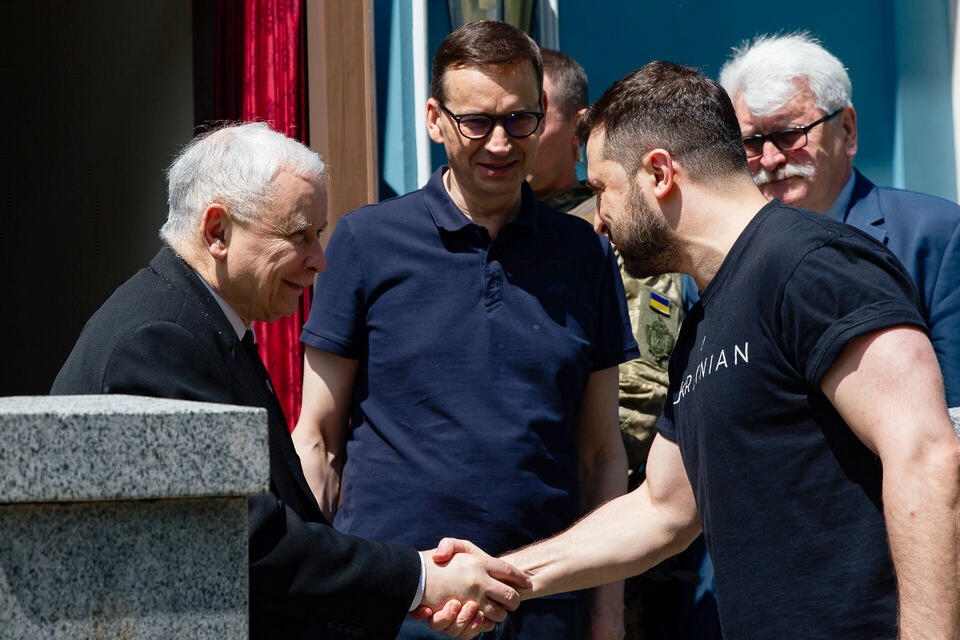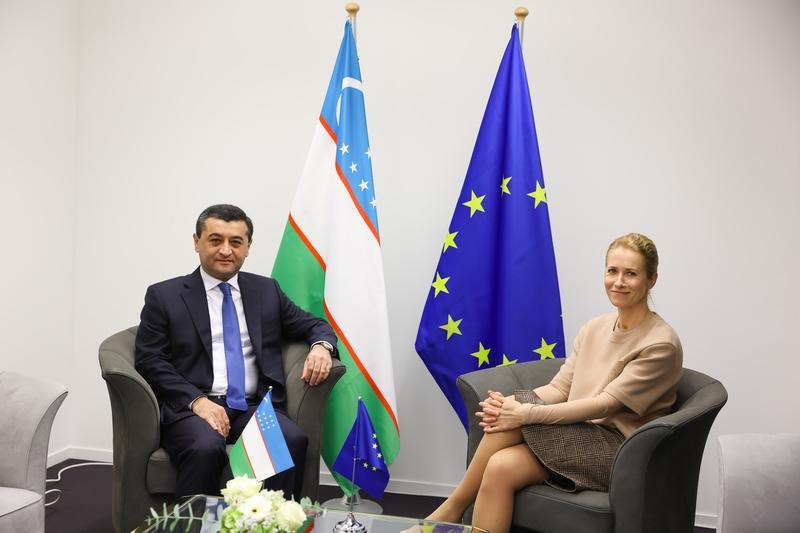
Polish-Ukrainian Relations Intensify as a Result of Russian Aggression (Part Two)
Polish-Ukrainian Relations Intensify as a Result of Russian Aggression (Part Two)
*To read Part One, please click here.
Poland is one of the most engaged Euro-Atlantic actors in the West’s proxy war with Russia over Ukraine. The military, societal and humanitarian support Poland continues to provide Ukraine has pushed the two neighboring states to deepen their strategic partnership; while the recently signed set of inter-governmental memorandums has laid the groundwork for more intense bilateral economic cooperation (see Part One in EDM, June 22). This period is exceptionally crucial now that the European Union, on June 23, officially granted Ukraine (along with Moldova) candidate status to join the political-economic bloc. And the development of Polish-Ukrainian relations may become even more important globally: as the United Nations warns, the severing of Ukraine’s supply chains for grain exports—caused by Russian military activities and naval blockade—could leave tens of millions struggling with acute hunger (see EDM, April 20, May 18, June 2, 9; Un.org, June 8). The crisis may hit Africa particularly hard given the high reliance of some African states on wheat imports from Ukraine and the Russian Federation, the latter of which faces its own food export limitations related to the war situation (Fao.org, April 8; Gazeta Prawna, June 21). Ukrainian traders are, thus, concentrating on Poland (along with Romania) in an effort to find alternative routes for outgoing food shipments; yet this transit option comes with serious challenges that must be overcome.
Poland is continuing its lobbying campaign at the EU level for integrating Ukraine, adopting further sanctions on Russia, and facilitating Ukraine’s participation in the Three Seas Initiative (3SI). The ongoing war and widespread sympathy of European governments toward Ukraine had, in particular, enabled Poland to break the taboo of discussing Ukrainian participation in 3SI, which Warsaw, Kyiv and Vilnius had sought for a while (see EDM, August 5, 2020), but which is currently reserved for EU member states only. Ukraine eventually was granted the status of “participating partner” at the 3SI summit in Riga, on June 20 (3seas.eu, June 20). In the meantime, although the path to full EU accession will be long and difficult, official candidate status will grant Ukraine access to some additional funds from Brussels in the form of the Instrument for Pre-Accession Assistance (IPA). Poland can notably contribute a great deal when it comes to assisting Ukraine with the implementation of this supplementary financing (see Part One).
The partial Russian seizure of Ukraine’s Black Sea coast and blockade of its northeastern shore has barred Ukraine from exporting any of its goods via maritime arteries. This has already had inflationary consequences and started to result in shortages on the international food markets (Al Jazeera, April 8; RFE/RL, May 28). On May 16, in Warsaw, representatives from the Polish and Ukrainian ministries of agriculture signed a joint statement on supporting Ukrainian grain exports. Importantly, the two Central Eastern European countries’ ministers were joined by the United States Secretary of Agriculture Thomas Vilsack. The US official’s presence, together with concurrent US Naval operations in the Baltic Sea and Washington’s previously expressed readiness to invest in regional infrastructure, provided the Polish-Ukrainian grain export initiative with the necessary political umbrella. That said, US support is not enough; the EU has an important facilitatory role to play here too.
While on a working visit to Ukraine, Polish Prime Minister Mateusz Morawiecki declared that the Ukrainian side had asked Poland’s assistance to export various types of goods, including foodstuff, to international markets (Dziennik.pl, June 1). EU Common Agricultural Policy regulations require detailed veterinary and phytosanitary inspections of some types of food products that reach the Single European Market, which obviously creates bottlenecks. However, EU law refers only indirectly to grain imports or grain transit through EU territory. These categories remain largely under the auspices of the member states’ national control programs—hence the joint Polish-Ukrainian consultations at the ministerial level aimed at increasing the bandwidth of border passages (Minagro.gov.ua, May 16).
The restrictions associated with Ukraine–Poland overland cargo transit are not limited to border controls and phytosanitary inspections but also relate to the compatibility of transit infrastructure between the two countries. As a consequence of its Soviet legacy, Ukraine’s railway network is built on a broader gauge than the railways in Poland and most of the rest of the EU. From March until May 2022, exactly 51 percent of Ukraine’s agricultural goods were being exported by rail. But because of capacity constraints and the track-width changes at the border, attention has also gone to the use of Danube River ports and road transport (Minagro.gov.ua, June 7).
On May 12, Brussels announced the EU-Ukraine Solidarity Lanes program to facilitate Ukraine’s agricultural exports and bilateral trade with the European bloc via the coordination and development of inter alia roads, railroads, waterways and border check infrastructure (EUR-lex, May 12). And during his above-mentioned visit to Ukraine, Morawiecki announced that Poland was already making use of this program (Dziennik.pl, June 1). On June 20, Polish and Ukrainian representatives ceremonially opened additional clearing points on the Polish-Ukrainian border (Business Insider, June 20). Yet much remains to be done. A large part of the needed transportation services and assets are in private stakeholders’ hands. In response, the European Commission announced that it will “set up a matchmaking platform to facilitate exchanges between logistics chain actors to optimise cargo flow”; thus, each of the EU member states has been asked to establish a “contact point which would allow stakeholders to notify [about] problems along the logistical chain” (EUR-lex, May 12).
Marcin Witczak, the CEO of Laude Smart Intermodal, the largest Polish company that deals with rail transport from Ukraine, says that his company is potentially able to handle five million tons of grain monthly. The capacity is relatively large since, in 2021, Ukraine exported 50 million tons of grain and legumes. Witczak clarifies, however, that the problems at the border need to be solved first—something that requires government engagement. He estimates that there are around 11,000 railway carriages near the Hrubieszów border crossing, but only around 540 are let into Poland daily (WNP.pl, June 7). In this context, it is worth noting that the Commission recommended resolving the issue of the border bottlenecks related to EU certification procedures by relocating the controls farther away from the border.
Unlike land border crossings, the throughput capacity at Polish and other European seaports should not be an issue. Once the grain enters Poland, multimodal transport options can be adopted to ensure the grain reaches the continent’s large global-facing ports. But time is running short, and room needs to be made in Ukrainian warehouses before this year’s harvest. Millions of tons of grain stored in western Ukraine are potentially exposed to rot. And last but not least, Africa and Middle Eastern customers are desperately awaiting the deliveries. In such circumstances, Polish-Ukrainian economic cooperation is becoming more critical than ever before.


